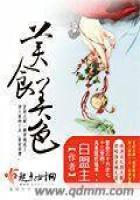The two flowers at the tip of a branch may grow distinct down to their united ovaries, or their tubes may be partly united, like Siamese twins - a union which in either case accounts for the odd shape of the so-called berry, that shows further traces of consolidation in its "two eyes," the remnants of eight calyx teeth.Experiment proves that when only one of the twin flowers is pollenized by insects (excluded from the other one by a net), fruit is rarely set; but when both are, a healthy seeded berry follows.To secure cross-fertilization, the partridge flower, like the bluets (q.v.), occurs in two different forms on distinct plants, seed from either producing after its kind.In one form the style is low within the tube, and the stamens protrude; in the other form the stamens are concealed, and the style, with its four spreading stigmas, is exserted.No single flower matures both its reproductive organs.Short-tongued small bees and flies cannot reach the nectar reserved for the blossom's benefactors because of the hairs inside the tube, which nearly close it; but larger bees and butterflies coming to suck a flower with tall stamens receive pollen on the precise spot on their long tongues that will come in contact with the sticky stigmas of the long-styled form visited later, and there rub the pollen off.The lobes' velvety surface keeps insect feet from slipping.
What endless confusion arises through giving the same popular folk names to different species! The Bob White, which is called quail in New England or wherever the ruffed grouse is known as partridge, is called partridge in the Middle and Southern States, where the ruffed grouse is known as pheasant.But as both these distributing agents, like most winter rovers, whether bird or beast, are inordinately fond of this tasteless partridge berry, as well as of the spicy fruit of quite another species, the aromatic wintergreen (q.v.), which shares with it a number of common names, every one may associate whatever bird and berry that best suit him.The delicious little twin-flower, beloved of Linnaeus, also comes in for a share of lost identity through confusion with the partridge vine.
CLEAVERS; GOOSE-GRASS; BEDSTRAW
(Galium Aparine) Madder family Flowers - Small, white, 4-parted, inconspicuous, in clusters of 1to 3 on peduncles from the axils of upper leaves.Stem: 2 to 5ft.long, scrambling, weak, square; bristly on the angles.
Leaves: in whorls of 6 or 8, narrow, midrib and edges very rough.
Fruit: Rounded, twin seed-vessels, beset with many hooked bristles.
Preferred Habitat - Shady ground.
Flowering Season - May-September.
Distribution - Eastern half of United States and Canada.
Among some seventy other English folk names by which cleavers are known are the following, taken from Britton and Brown's "Illustrated Flora": "CATCHWEED, BEGGAR-LICE, BURHEAD, CLOVER-GRASS, CLING-RASCAL, SCRATCH-GRASS, WILD HEDGE-BURS, HAIRIF or AIRIF, STICK-A-BACK or STICKLE-BACK, GOSLING-GRASS or GOSLING-WEED, TURKEY-GRASS, PIGTAIL, GRIP or GRIP-GRASS, LOVEMAN, SWEETHEARTS." From these it will be seen that the insignificant little white flowers impress not the popular mind.But the twin burs which steal a ride on every passing animal, whether man or beast, in the hope of reaching new colonizing ground far from the parent plant, rarely fail to make an impression on one who has to pick trailing sprays beset with them off woollen clothing.
Several other similar bur-bearing relatives there are, common in various parts of America as they are in Europe.The SWEET-SCENTEDBEDSTRAW (G.trifolium), always with three little greenish flowers at the end of a footstalk, or branched into three pedicels that are one to three flowered, and with narrowly oval, one-nerved leaves arranged in whorls of six on its square stem, ranges from ocean to ocean on this continent, over northern Europe, and in Asia from Japan to the Himalayas.It will be noticed that plants depending upon the by hook or by crook method of travel are among the best of globe trotters.This species becomes increasingly fragrant as it dries.
COMMON ELDER; BLACK-BERRIED, AMERICAN or SWEET ELDER; ELDERBERRY(Sambucus Canadensis) Honeysuckle family Flowers - Small, creamy, white, numerous, odorous, in large, flat-topped, or convex cymes at ends of branches.Calyx tubular, minute; corolla of 5 spreading lobes; 5 stamens; style short, 3-parted.Stem: A shrub 4 to 10 ft.high, smooth, pithy, with little wood.Leaves: Opposite, pinnately compounded of 5 to 11(usually 7) oval, pointed, and saw-edged leaflets, heavy-scented when crushed.Fruit: Reddish-black, juicy "berries" (drupes).
Preferred Habitat - Rich, moist soil; open situation.
Flowering Season - June-July.
Distribution - Nova Scotia to the Gulf of Mexico, and westward 2,000 miles.
Flowers far less beautiful than these flat-spread, misty clusters, that are borne in such profusion along the country lane and meadow hedgerows in June, are brought from the ends of the earth to adorn our over-conventional gardens.Certain European relatives, with golden or otherwise variegated foliage that looks sickly after the first resplendent outburst in spring, receive places of honor with monotonous frequency in American shrubbery borders.
Like the wild carrot among all the umbel-bearers, and the daisy among the horde of composites, the elder flower has massed its minute florets together, knowing that there was no hope of attracting insect friends, except in such union.Where clumps of elder grow - and society it ever prefers to solitude - few shrubs, looked at from above, which, of course, is the winged insect's point of view, offer a better advertisement.There are people who object to the honey-like odor of the flowers.













